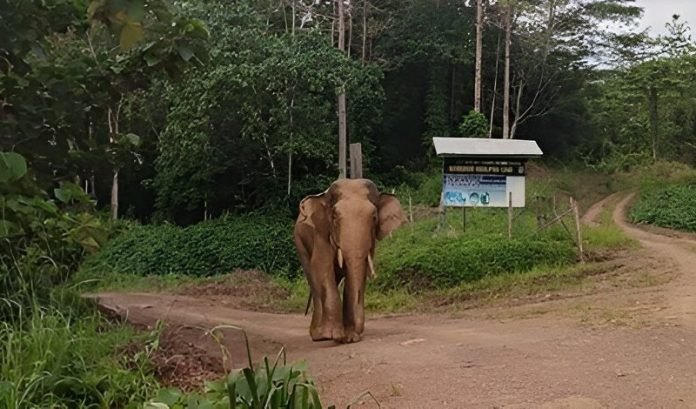
A newly confirmed subspecies of elephant, the Bornean elephant, has been listed as endangered, putting it at risk of extinction.
These elephants are smaller than other Asian elephants, standing just 2.5 meters tall, making them the smallest living elephants, even smaller than the African forest elephant.
First named in 1950, there has been much debate about whether Bornean elephants should be considered a distinct subspecies.
This uncertainty has limited the protections they received. During this time, their habitat in northeastern Borneo has been severely damaged by logging for timber and the planting of oil palm, confining these elephants to a small area.
New research has finally confirmed the Bornean elephant as its own subspecies, and the International Union for the Conservation of Nature (IUCN) now considers them endangered.
Scientists who conducted the assessment, including Dr. Cheryl Cheah from WWF Malaysia, hope this recognition will boost efforts to protect these threatened animals.
“As a unique subspecies of the Asian elephant, Bornean elephants are part of our natural heritage,” says Dr. Cheah.
“Listing them as endangered on the Red List is a crucial step to enhance conservation efforts and direct resources to where they are most needed.”
The designation highlights the urgent need for collaborative conservation actions to reduce human-elephant conflicts and prevent further habitat loss and fragmentation. “Managing these issues effectively is vital for their survival,” Cheah adds.
Vivek Menon, chair of the IUCN’s Asian Elephant Specialist Group, notes, “This subspecies has never been listed before. Recognizing its endangered status should prompt Malaysia and Indonesia to focus on its conservation.”
Bornean elephants are one of the most isolated populations of Asian elephants, living in the Malaysian state of Sabah and the Indonesian state of Kalimantan. Historically, Asian elephants have been classified into three subspecies: Sumatran, Sri Lankan, and Indian.
The status of the Bornean elephant has long been debated, with some suggesting they belong to the Sumatran subspecies, but new research confirms they are distinct.
Back in 1950, a Sri Lankan scientist named Paulus Deraniyagala described the Bornean elephant as a separate subspecies. While many of his proposed subspecies have not been supported over time, the Bornean elephant has continued to be a topic of debate. Adrian, one of the researchers, decided it was time for an objective study to provide concrete data.
Adrian and a team of researchers studied museum collections worldwide, comparing the skulls of over 120 Asian elephants, including more than 30 skulls from the Natural History Museum. Their analysis showed that Bornean elephants have smaller and wider heads than their relatives, with a narrower gap where the trunk attaches.
“Bornean elephants are noticeably smaller than their relatives,” Adrian says. “This could be due to the ‘island effect,’ where species on islands evolve differently. However, it’s hard to say exactly why they are smaller. They also have low genetic diversity, which might play a role.”
Previous genetic studies showed that Bornean elephants are distinct from other Asian elephants. They are thought to have split from other Asian elephants about 300,000 years ago, but it’s unclear how they got to Borneo. They might have walked to Borneo when sea levels were lower or been brought by humans.
Recognizing Bornean elephants as a subspecies is significant for their conservation. It means there is now a greater reason to protect them due to their unique evolutionary history. This comes at a crucial time, as there are only about 1,000 Bornean elephants left in the wild. Their population has declined sharply over the past 75 years, and they now occupy less than half of their original habitat.
The main threats to Bornean elephants are palm oil plantations and logging, which have fragmented their forest habitat. This forces elephants to leave the forests in search of food, leading to conflicts with humans.
Addressing these issues is challenging as Malaysian and Indonesian governments, along with conservation organizations, try to balance the needs of the elephants with those of local communities. However, placing the Bornean elephant on the Red List may lead to renewed efforts to protect them.
“Elephants play a crucial role in the rainforest by dispersing seeds and creating clearings,” says Adrian. “By conserving these elephants, we protect many other species and the wider ecosystem.”
Researchers call for the protection and connection of forest fragments where the elephants live, possibly by rerouting roads or creating wildlife corridors through palm plantations. Working with local communities to reduce human-elephant conflicts is also essential.
Protecting the Bornean elephant is within our reach, but only time will tell if we take the necessary steps. By acting now, we can help ensure the survival of these unique and endangered elephants for future generations.
Source: Natural History Museum.



